From Triboelectric Nanogenerator to Hybrid Energy Harvesters: A Review on the Integration Strategy toward High Efficiency and Multifunctionality
- PMID: 37834542
- PMCID: PMC10573783
- DOI: 10.3390/ma16196405
From Triboelectric Nanogenerator to Hybrid Energy Harvesters: A Review on the Integration Strategy toward High Efficiency and Multifunctionality
Abstract
The rapid development of smart devices and electronic products puts forward higher requirements for power supply components. As a promising solution, hybrid energy harvesters that are based on a triboelectric nanogenerator (HEHTNG) show advantages of both high energy harvesting efficiency and multifunctionality. Aiming to systematically elaborate the latest research progress of a HEHTNG, this review starts by introducing its working principle with a focus on the combination of triboelectric nanogenerators with various other energy harvesters, such as piezoelectric nanogenerators, thermoelectric/pyroelectric nanogenerators, solar cells, and electromagnetic nanogenerators. While the performance improvement and integration strategies of HEHTNG toward environmental energy harvesting are emphasized, the latest applications of HEHTNGs as multifunctional sensors in human health detection are also illustrated. Finally, we discuss the main challenges and prospects of HEHTNGs, hoping that this work can provide a clear direction for the future development of intelligent energy harvesting systems for the Internet of Things.
Keywords: hybrid energy harvesters; multifunction; performance improvement; triboelectric nanogenerators.
Conflict of interest statement
The authors declare no conflict of interest.
Figures
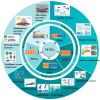



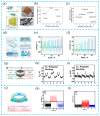
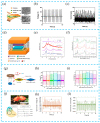

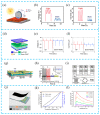
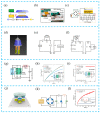
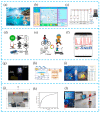


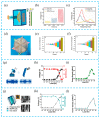



References
-
- Chandrarathna S.C., Graham S.A., Ali M., Ranaweera A.L.A.K., Karunarathne M.L., Yu J.S., Lee J.W. Analysis and Experiment of Self-Powered, Pulse-Based Energy Harvester Using 400 V FEP-Based Segmented Triboelectric Nanogenerators and 98.2% Tracking Efficient Power Management IC for Multi-Functional IoT Applications. Adv. Funct. Mater. 2023;33:2213900. doi: 10.1002/adfm.202213900. - DOI
-
- Funayama R., Hayashi S., Terakawa M. Laser-Induced Graphitization of Lignin/PLLA Composite Sheets for Biodegradable Triboelectric Nanogenerators. ACS Sustain. Chem. Eng. 2023;11:3114–3122. doi: 10.1021/acssuschemeng.2c07510. - DOI
-
- Salauddin M., Rana S.M.S., Sharifuzzaman M., Song H.S., Reza M.S., Jeong S.H., Park J.Y. Highly Electronegative V2CT x/Silicone Nanocomposite-Based Serpentine Triboelectric Nanogenerator for Wearable Self-Powered Sensors and Sign Language Interpretation. Adv. Energy Mater. 2023;13:2203812. doi: 10.1002/aenm.202203812. - DOI
Publication types
Grants and funding
- 2016YFA0202702/the National Key R & D Project from Minister of Science and Technology
- 2016YFA0202701/the National Key R & D Project from Minister of Science and Technology
- NSFC No. 51873020/the National Natural Science Foundation of China
- No. FRF-MP-20-38/the University Basic Scientific Research Business Fee
LinkOut - more resources
Full Text Sources
Research Materials

